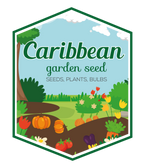Essential Care Tips for Healthy Indoor Plants
Understanding Plant Needs: A Comprehensive Guide
Introduction
Plants are living organisms with unique needs. Understanding these needs is crucial for their survival and thrive. In this article, we will delve into the world of plants and explore their requirements.
Light
Light is essential for plant growth. Plants use light to undergo photosynthesis, a process that converts light energy into chemical energy. The amount and intensity of light vary depending on the plant species. Some plants require direct sunlight while others prefer indirect light.
Water
Water is another critical factor in plant care. Plants need water to carry out their metabolic processes. Overwatering or underwatering can be detrimental to plant health. It's essential to find the right balance.
Soil
Soil provides plants with the necessary nutrients for growth. The type of soil and its pH level can affect plant health. Well-draining soil is essential to prevent waterlogged soil conditions.
Temperature
Plants are sensitive to temperature extremes. Most houseplants prefer temperatures between 65-75°F (18-24°C). Avoid placing plants near heating or cooling vents, fireplaces, or drafty windows.
Humidity
Plants thrive in humid environments. Indoor plants often suffer from low humidity due to air conditioning and heating systems. Using a humidifier or grouping plants together can help maintain a humid microclimate.
Fertilization
Plants need nutrients to grow. Fertilizing your plants regularly provides them with the necessary nutrients. However, overfertilization can be harmful.
Pruning
Pruning helps maintain plant shape, promotes healthy growth, and encourages fruiting. Prune your plants regularly to keep them looking their best.
Repotting
As plants grow, they may need to be repotted into a larger container. This provides fresh soil and more room for the roots to expand. Spring and summer are the best times for repotting.
Pest Control
Indoor plants can be susceptible to pests like spider mites, mealybugs, and scale. Regularly inspect your plants and take action if you notice any signs of infestation.
Propagation
Many plants can be propagated through division, cuttings, or seeds. This is a great way to share plants with friends or expand your own collection.
Common Plant Problems
Yellowing leaves, droopy stems, and slow growth are common issues that may arise. Understanding the causes of these problems can help you take corrective action.
Conclusion
Plants bring life and beauty to our indoor spaces. By understanding their needs and providing proper care, you can enjoy the benefits of indoor gardening. Remember, every plant is unique, so take the time to learn about the specific needs of your plants.

![[Seeds] - Caribbeangardenseed](http://caribbeangardenseed.com/cdn/shop/files/gift-card-gift-card-1_1024x1024_dfa857db-9150-4315-a362-7f0bb3fb9c47_60x28.png?v=1722895789)